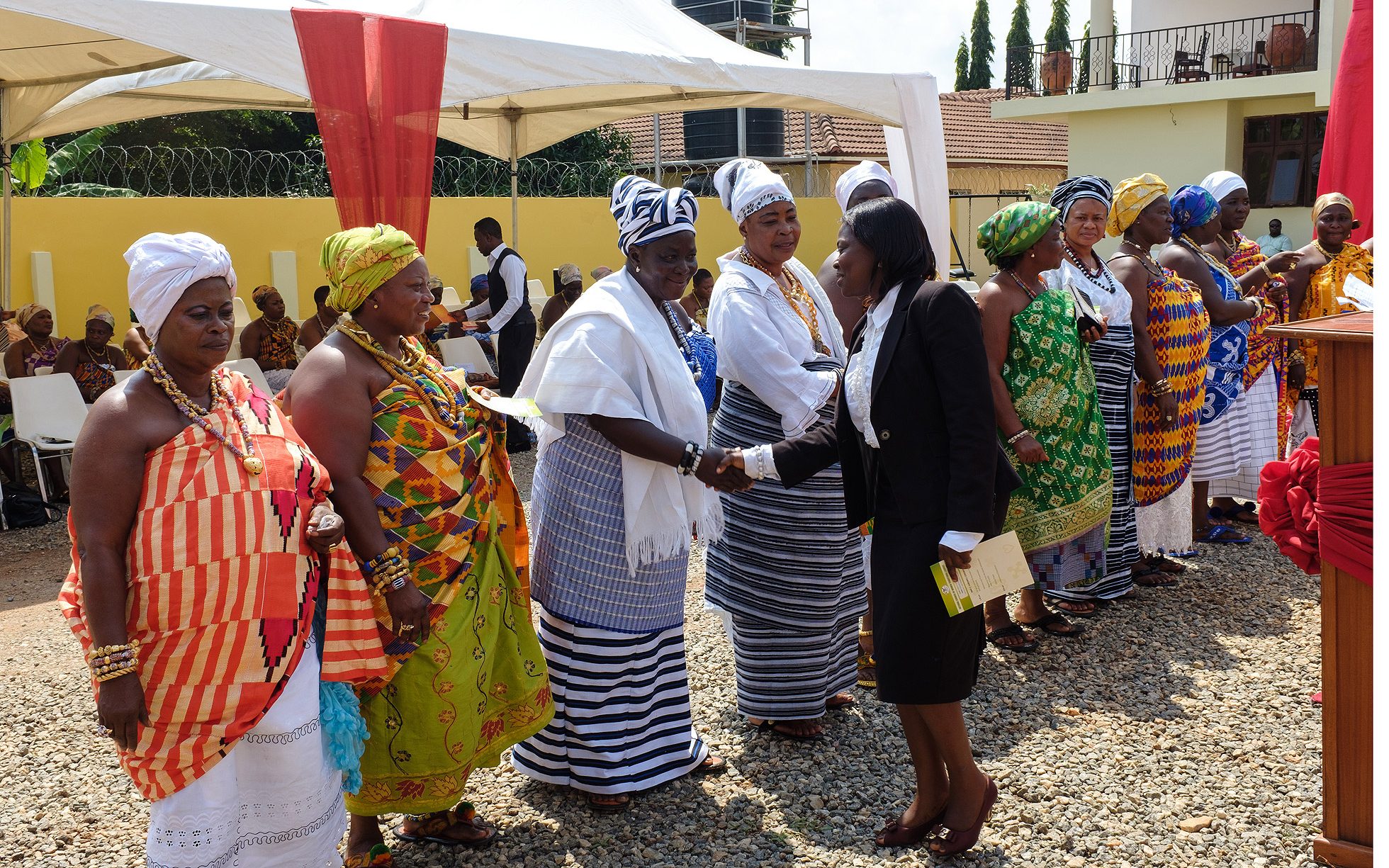How Do Queen Mothers Dress in Ghana?

Queen mothers hold a special place in Ghanaian culture, and their dressing is an important aspect that reflects their elevated status and traditional values. These influential women are highly respected figures who play a crucial role in their communities.
They are seen as custodians of tradition, wise advisors, and powerful leaders. As such, their dressing not only serves as a form of self-expression but also carries deep cultural and symbolic meaning.
When it comes to how queen mothers dress in Ghana, one cannot help but be captivated by their exquisite and elaborate outfits. The attire worn by queen mothers is a beautiful blend of traditional and modern elements, showcasing the country’s diverse cultural influences.
Traditional fabrics such as kente, adinkra, and wax prints are commonly used in the creation of queen mothers’ clothing. These fabrics are meticulously hand-woven or printed with intricate patterns and vibrant colors, symbolizing various aspects of Ghanaian culture. Each fabric design tells a story, representing a particular tribe, historical event, or proverb.
The traditional dress of Ghanaian queen mothers typically consists of a flowing gown or robe known as a “batakari” or “ntoma.” These garments are often made from luxurious fabrics and adorned with embroidery, beads, and sequins. The batakari is usually worn over a blouse and a long wrap-around skirt called a “lappa.”
To complete their regal look, queen mothers accessorize with a variety of ornate jewelry pieces. These accessories include necklaces, bracelets, earrings, and headpieces, all crafted with precision and attention to detail. The jewelry is often made from gold, silver, or beads, adding a touch of opulence to their overall appearance.
The significance of queen mothers’ dressing goes beyond aesthetics. It serves as a visual representation of their authority, wisdom, and connection to tradition. The intricate designs and vibrant colors of their outfits symbolize the vibrancy and diversity of Ghanaian culture. By donning these garments, queen mothers embody their roles as cultural ambassadors, preserving and promoting their heritage.
The way queen mothers dress also reflects their social status and hierarchy within their communities. The more elaborate and intricate their attire, the higher their position is perceived to be. Their dressing signifies power, respect, and a sense of responsibility towards their people.
In Ghanaian culture, queen mothers are highly regarded as pillars of strength and wisdom. Through their dressing, they establish a visual language that communicates their status, heritage, and commitment to their communities. Their attire represents a fascinating fusion of tradition and modernity, embodying the essence of Ghanaian identity.
How queen mothers dresses in Ghana
- Traditional Ghanaian fabrics such as kente, adinkra, and batik are commonly used. These fabrics are vibrant and colorful, with intricate patterns that hold cultural significance. Choose a fabric that resonates with you and reflects your style and personality.
- Queen Mothers in Ghana typically wear a two-piece outfit consisting of a blouse and a skirt. The blouse, known as a “top,” is often tailored to fit the body and features various necklines, including round, V-neck, or high collar. The skirt, known as a “wrapper” or “lappa,” is usually ankle-length and worn in a way that accentuates the waistline.
- Accessories play a crucial role in completing the Queen Mother’s look. Adorn yourself with beautifully crafted jewelry, such as necklaces, bracelets, and earrings. Ghanaian jewelry often incorporates gold, beads, and precious stones, symbolizing wealth and status. Additionally, headgear, known as a “gele,” is worn to add elegance and flair to the overall outfit.
- The hairstyle is an essential part of the Queen Mother’s ensemble. Traditionally, Ghanaian women wear their hair in intricate braided styles, such as cornrows or Ghana braids. These hairstyles are not only aesthetically pleasing but also hold cultural significance. Consider consulting a professional hairstylist who specializes in Ghanaian hairstyles to achieve an authentic look.
- To complete the Queen Mother’s look, makeup is applied to enhance natural features and add a touch of glamour. Ghanaian women often use earthy tones and vibrant colors to highlight their eyes, cheeks, and lips. Experiment with bold eyeshadows, defined eyebrows, and a touch of shimmer to achieve a regal appearance.
- When it comes to footwear, Queen Mothers in Ghana often wear traditional sandals or slippers made from locally sourced materials such as leather or fabric. These shoes are comfortable and stylish, complementing the overall traditional attire.
Conclusion
The dressing of queen mothers in Ghana is not merely a matter of fashion but a deeply rooted cultural practice that holds immense significance. Their attire showcases the richness and diversity of Ghanaian culture while symbolizing their elevated status and leadership roles.
Queen mothers’ dressing serves as a visual representation of tradition, authority, and their vital contributions to their communities. Queen mothers symbolize the strength, wisdom, and authority within Ghanaian culture, and their clothing serves as a visual testament to their esteemed position.


